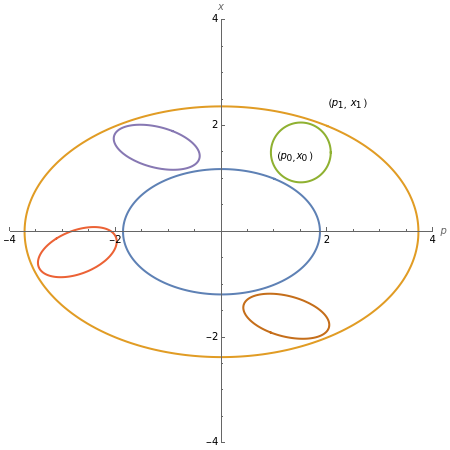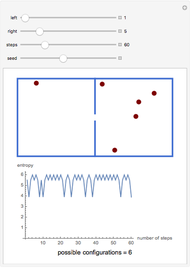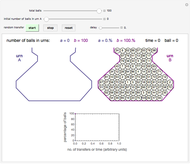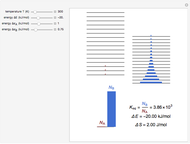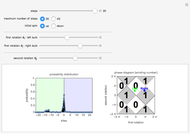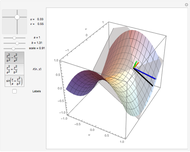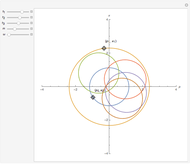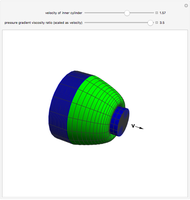Liouville's Theorem Applied to 1D Harmonic Oscillator

Requires a Wolfram Notebook System
Interact on desktop, mobile and cloud with the free Wolfram Player or other Wolfram Language products.
Time evolution generated by the action of a Hamiltonian preserves area in position-momentum phase space. Watch how an area deforms with time, eventually cycling back to its initial geometry. Using phase-space plots for the one-dimensional harmonic oscillator, two trajectories, each based on a specific initial value of a pair of momentum and position values, are plotted with controls to vary these phase-space points. A circular region approximately bounded by these trajectories is plotted between these points, then replotted at a few subsequent times. Controls are provided to vary the time of each of the time-evolved regions.
Contributed by: Peeter Joot (February 2013)
Open content licensed under CC BY-NC-SA
Snapshots
Details
The Hamiltonian for the simple harmonic oscillator is  . Using Hamilton's equations:
. Using Hamilton's equations:  and
and  , the solution is found to be
, the solution is found to be
 ,
,
 .
.
Time evolution of any initial phase-space point for this harmonic oscillator, representing an associated pair of momentum-position values, is determined by these equations. These trace out elliptical trajectories in phase space. Time evolution of regions in phase space is also governed by these equations. For an ensemble of harmonic oscillators, a region in phase space can be associated with the density of oscillators. Thus any increase in the number of oscillators increases the phase-space density and also enhances the current flow through the boundary of the region. This is the essence of Liouville's theorem. The Demonstration shows this geometrically, with areas that are conserved by Hamiltonian-driven time evolution.
Permanent Citation
